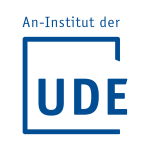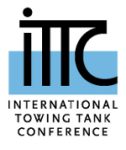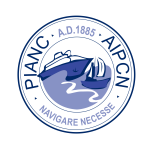CLUSTER
Conzepte für Logistik Und Schiffs Transport Entlang der Ruhr
Entwicklung eines Planungstools, welches es erlaubt, die Wasserflächen in Häfen zugunsten neuer Logistikflächen an Land zu optimieren, ohne dass navigatorische Sicherheit und Manöverzeiten nachteilig beeinflusst werden.
Innovationspunkte
- Entwicklung eines Konzepts, welches die technischen Möglichkeiten moderner Binnenschiffe nutzt, um den Bedarf an Wasserflächen im Hafen zugunsten neuer Logistikflächen an Land zu reduzieren.
- Nutzung des Hafens Duisburg als Hub in das Ruhrgebiet mit möglichen Anlaufpunkten in weiteren Häfen (z.B. Essen und Dortmund).
- Nutzung modernster Simulationstechniken zur Lösung des Flächenproblems der Ruhrhäfen.
- Reduzierte Umweltbelastung durch Förderung einer multimodalen Transportkette mit umweltfreundlichen Binnenschiffen.
- Volle nachhaltige Nutzung des innovativen Schiffsführungssimulators des DST.
Nutzen
- Das Konzept wird vielen Zielen des NRW-Hafenkonzepts und des Strategiepapiers der Metropole Ruhr gerecht, wie u.a.:
- Verbesserung der Wettbewerbsfähigkeit der Häfen durch Schöpfung neuer Flächen für Logistikunternehmen.
- Entwicklung zeitgemäßer Hafenkonzepte zur besseren Ausnutzung der vorhandenen Infrastruktur.
- Stärkung der Hinterlandfunktion der Metropole Ruhr.
Der höhere Transportanteil der Binnenschifffahrt führt zu ökologischen Vorteilen, wie
- Entlastung des Verkehrsträgers Straße;
- Verringerung von Ressourcenverbrauch und Emissionen (u.a. CO2).
Arbeitsschritte Häfen brauchen mehr Fläche, allerdings stehen der Erschließung neuer hafennaher Landflächen oft städtebauliche oder Naturschutz-Bedenken gegenüber. Da Anordnung und Größe der Hafenbecken häufig noch aus der Zeit der Schleppschifffahrt stammen, kann eine kritische Betrachtung dieser vorgehaltenen Wasserflächen durchaus die Umwandlung dieser Flächen in wertschöpfende Landflächen ermöglichen, ohne die navigatorische Sicherheit heutiger und zukünftiger Binnenschiffe davon nachteilig zu beeinträchtigen. Dies kann ohne die Notwendigkeit baulicher Veränderungen – weder am Original noch am Modell – durch Computersimulationen erprobt werden. Dazu wurden in diesem Projekt auf zwei Ebenen Simulationen durchgeführt:
Nautische Simulation
- Implementierung heutiger und zukünftiger Schiffsmodelle in den Simulator des DST.
- Abhängig von der Hafentopologie und dem bedienenden Personal wird mit dem Simulator der Standardraumbedarf für Manöver ermittelt.
- Ausgehend von Standardmanövern und stationären Fahrzuständen wird ein „Baukasten“ für die Hafenplanung erstellt.
- Validierung der erweiterten Entwurfsstrategie.
- Eventuell Schulung der Besatzung.
Verkehrssimulation
- Ermittlung der Situation der Verkehrsanbindung der neu entstandenen Landflächen
- Analyse der vorhandenen und zu erwartenden Kapazitäten
- Simulationsanalyse der Verkehrsanbindung
- Verknüpfung mit dem überregionalen Verkehrsnetz
- Eventuell Entwicklung geeigneter Leitsysteme
- Entwurf möglicher Leitsysteme zur Optimierung des Verkehrsablaufs
- Test mit Simulationsumgebung
- Formulierung eines detaillierten Entwurfs
Projektlaufzeit:
- Juli 2009 – Mai 2012
Förderkulisse:
- EU-NRW Ziel-2 (EFRE) Förderwettbewerbs „Logistik.NRW“
Verbundpartner:
- DST – Entwicklungszentrum für Schiffstechnik und Transportsysteme e. V.
- DUISPORT Duisburger Hafen AG
- Universität Duisburg-Essen Lehrstuhl für Physik von Transport und Verkehr






